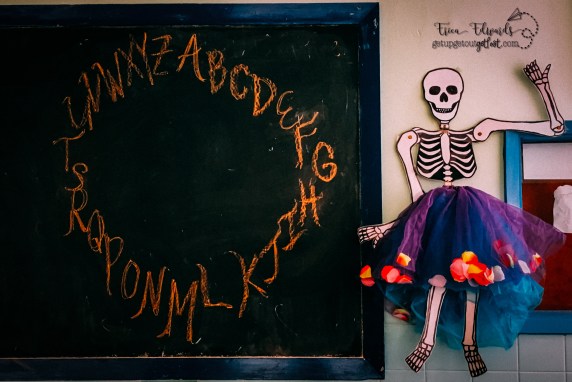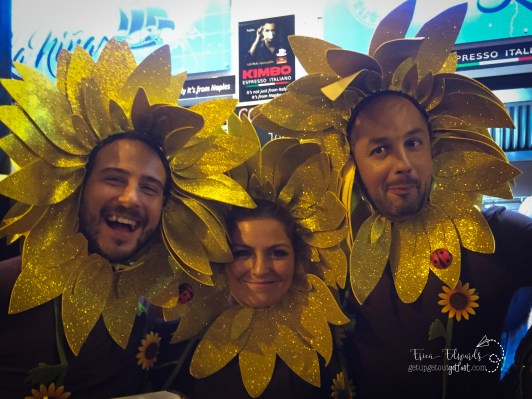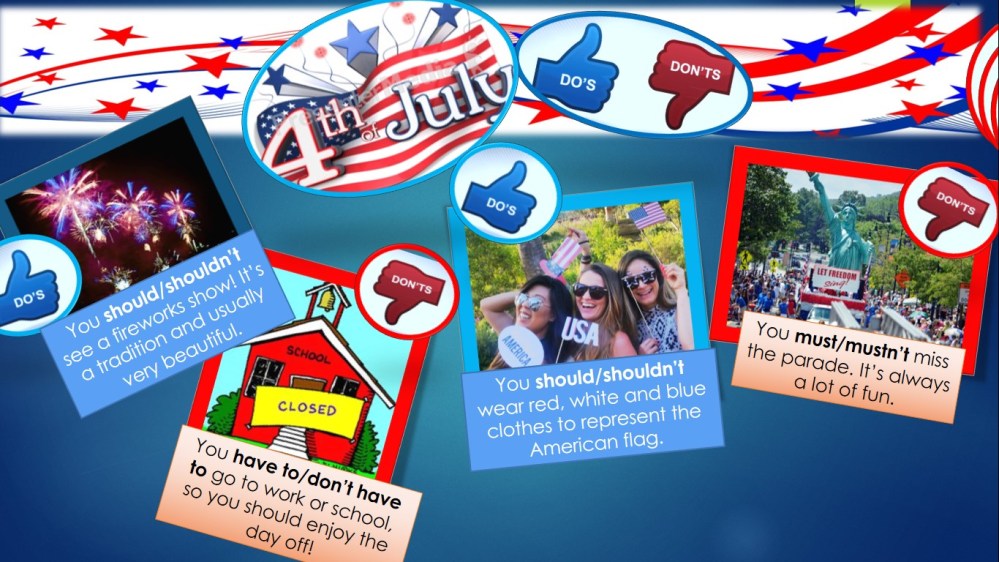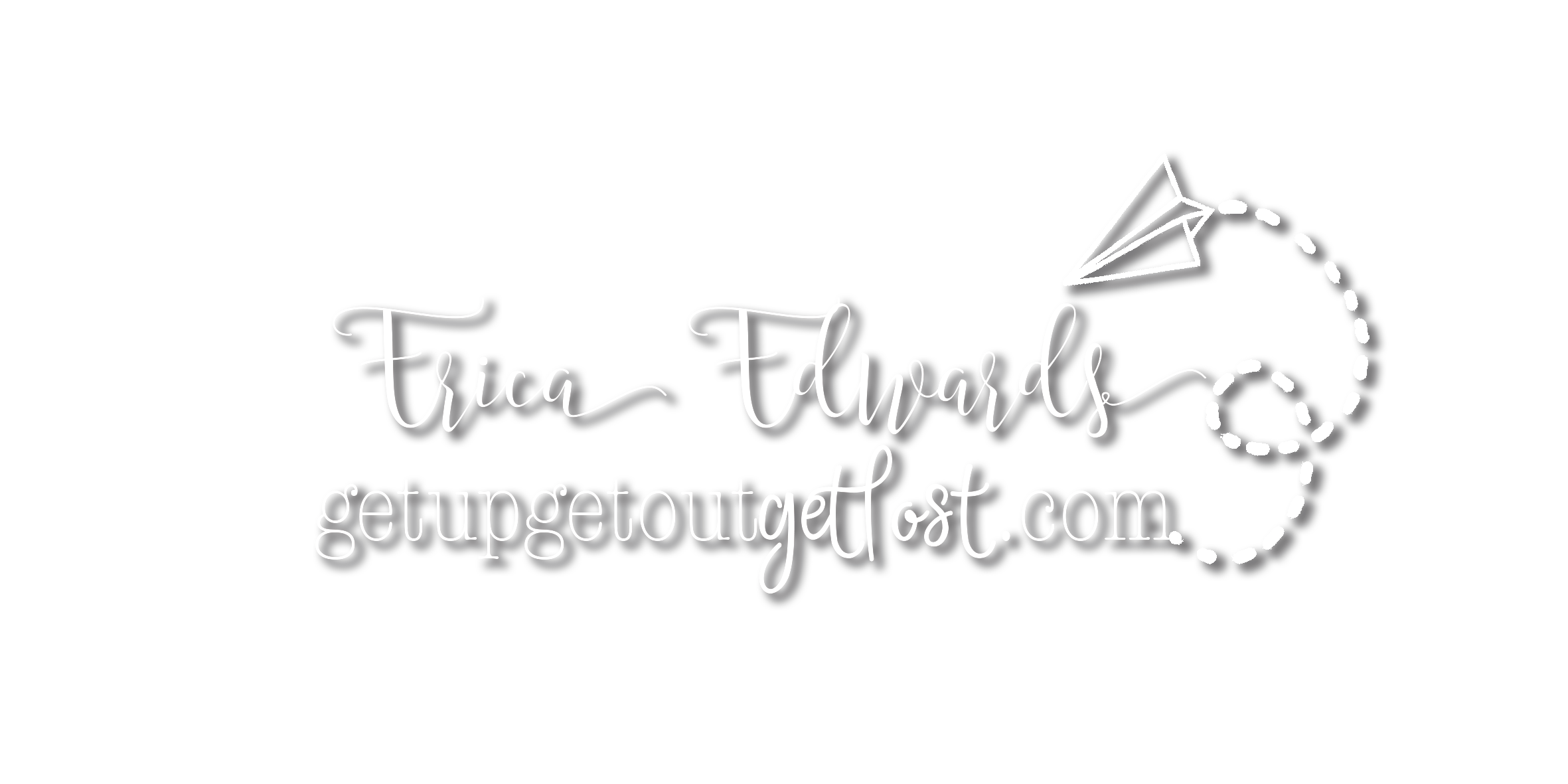Carnaval in the Classroom:
ESL Lesson Plans
It hits every year at the end of January and lasts until the papier-mâché sardine goes up in smoke. Symptoms include fluorescent hair, an excess of glitter appearing on the skin, hair and surrounding areas, and an intense desire to tap your toes to tunes like Chayanne’s Madre Tierra (which by the way, I recommend listening to while you read this post to put ya in the Carnaval spirit!) 🎶
Carnival Fever.
One thing I’ve learnt Teaching English abroad is that there are many great opportunities to share your language, culture, traditions and celebrations, but if you want to keep your students completely engaged, try bringing their culture into the classroom. As an added bonus, you’ll learn a ton about local history, culture and traditions from your students!
If you’re interested in learning more about how Carnaval is celebrated throughout Spain (particularly the Canary Islands), check out my posts from Las Palmas de Gran Canaria and Santa Cruz de Tenerife 😊 If you’re interested in bringing Carnival into the classroom, read on for 10 Carnival Activities and Lesson Plans for English Language students!
1. Guess the Costume
Works best with: Beg. – Intermediate (4º – 6º primary, 1º Bach)
You need: If you’ve got any old costumes lying around – tutus, leotards, wings, masks, wigs, etc. – bring them in to use as realia!
Intro
Review and introduce some Carnival vocab. Pictures will suffice, but I prefer to use realia if possible.
Alternatively, you can start off with a quick round of Scategories to get them thinking about Carnival costumes and costume components. I use categories like:
1. Most likely costumes for this years´theme
2. Most original or creative costume you saw last year
3. Costume props & accessories
Individual Work
Give students 3 – 5 minutes solo or with a partner to imagine a Carnival costume and to write down the components they need to put it together. If they have time, have them think of two or three different costumes.
If they´re older or have a better level, I tell them that easy costumes are forbidden and instead to only use unique costumes they’ve worn or seen in the past, sometimes I´ll let them look up images on their phone for inspiration.
Class Activity
Once everyone has their ideas, students come up one by one to describe the costume (minimum 3 sentences) and the rest of the class has to guess what it is.
“You need to wear a black and yellow striped leotard. You need to wear wings over the leotard. You need to wear a headband with antenna on your head.”
“Is it a bee?”
“Yes, it is!”
Grammar & Vocab Focus
- Vocabulary related to costumes, wearing and “dressing up”
- Prepositions of where costume items are worn (on your head, over your face, in your hand)
- Question structure: Is it an XYZ?
2. 20 Questions: Carnaval Costumes
Works best with: Beginner –Intermediate (4º – 6º primary, 1º – 3º ESO)
You need: If you’ve got any old costumes laying around – tutus, leotards, wings, masks, wigs, etc. – bring them in to use as realia!
This is similar to above, but instead of one person describing, they simply have to imagine the costume and the other students have to ask YES or NO questions to figure out what they’ve chosen. I often use both of these activities in one class period for variation and to keep ‘em from getting bored.
Intro
Review and introduce some Carnival vocab through brainstorming or Scattegories.
Individual Work
Give the students a couple of minutes to jot down 3 – 5 ideas for creative Carnival costumes.
Class Activity
Students come up one at a time and whisper the costume they’re thinking of to the teacher. The class must ask the student YES or NO questions to figure out what the costume is.
“Do you need wings?”
“Yes, you do.”“Are there stripes on the costume?”
“Yes, there are.”“Is the costume blue?”
“No, it isn’t.”
After at least 5 questions have been asked and answered, they can begin making guesses as to what the costume is.
Grammar & Vocab Focus
- Costume vocabulary
- Practice making questions (Do you…?, Are there…? Is it…?)
- Practice short answers (Yes, it is; No, you don’t; etc.)
3. DIY Rosco (from Pasapalabra)
Works best with: Intermediate – Advanced (2º ESO – 2º Bach)
You need: Nada
I love this one because it’s great practice explaining word meanings and it’s absolutely ZERO prep for you! Plus, it comes from the Spanish game show Pasapalabra (Password), so they’re familiar with it.

Intro
I warm up with a few rounds of Scategories to get them thinking about Carnival costumes and costume components. I use categories like:
1. Popular Carnival costumes
2. Costume props & accessories
3. Carnival traditions
4. Anything else you know about Carnival (places that celebrate, traditional foods, etc.)
As scategories is wrapping up, I throw up a picture of the Rosco from the Pasapalabra gameshow (or just draw one on the board) and they know what´s coming.
Group/Pair Work
Divide the alphabet by groups or pairs and explain that they are going to create their own Rosco and will be responsible for the letters assigned (Group 1: A-H; Group 2: I-P, Group 3: Q-Z). Give them about 5 – 10 minutes to come up with the words (let them use the dictionary!) and then about 10 – 15 minutes to define them. This is tough and they’ll need help and suggestions from you!
Encourage them to think about Carnival traditions, costumes, instruments and famous places that celebrate Carnival.
Class Activity
Once their lists are pretty solid, it’s time to play!
If they have a high level, let them read out their definitions while the other groups guess the words. If their level is lower, read out the definitions yourself (you’ll have to adjust some so they make sense). If it’s a small class, I let everyone call out answers to guess the word, but if it’s a large class I play in teams and nominate a few representatives to answer.
Grammar & Vocab Focus
- Vocabulary related to Carnival costumes and traditions
- Practice using relative clauses (who, that, which, whose, where, when)
** Bonus! Once you’ve got a pretty solid list of words from your higher level classes, you can use them to play ROSCO or Password with your lower levels!
4. Carnaval Picture Descriptions (B1/PET)
Works best with: Low Intermediate (5º primary – 2º ESO)
You need: A variety of Carnival images (in color) and preferably laminated. Carnival traditions may vary from one region to the other, but I always include pictures of these events and traditions (you can easily find them from a google search):
| Local Carnival | Current year Carnival Poster |
| Rival Carnival (IE, Las Palmas vs. Santa Cruz) | Current year advert (IE, Tenerife Dorado ad or Arehucas ad from Gran Canaria) |
| Venice Carnival | Drag Queen Competition (if relevant) |
| Rio de Janeiro Carnival | Los Indianos (Las Palmas, La Palma) |
| Mardi Gras in New Orleans | Dancers & Dance Styles |
| Burial of the Sardine | Carnival Queen |
| Costume Competition | Parade floats |
| Murgas | Comparsas |
Intro
Project a Halloween picture with a variety of costumes. Have students describe what they see, using both costume vocabulary and picture description vocabulary.

Remind them to use:
- There is/there are; I can see
- Prepositions of place (In the background/At the front/To the left)
- Present continuous (She is wearing/He is holding)
- Conjecture (I think it’s Halloween because XYZ; I think they’re having fun because XYZ)
Groups or Pairs
Give each group or pair (depending on class size) a picture related to Carnival and tell them they have 8 – 10 minutes to prepare a 5 minute presentation describing the picture and explaining the event or tradition to someone who knows nothing about Carnival. IE, if it’s a picture of a murga, they should first describe what they see and second explain what a murga is, the history, an anecdote, etc.
Class Activity
Once they’ve had time to get their ideas together, each pair or group must come to the front of the classroom and talk about their picture for 3 – 5 minutes.
Grammar & Vocab Focus
The main focus here is practicing picture descriptions, as per the ever looming Cambridge exams:
- There is/there are
- Prepositions of place
- Present continuous
- Conjecture (I think ABC because XYZ)
- Expressing opinions and personal relevance
5. Carnaval Picture Descriptions (CEFR B2/FCE)
Works best with: Intermediate (2º – 4º ESO, Bach)
You need: A variety of Carnival images (in color) and preferably laminated. Carnival traditions may vary from one region to the other, but I always include a set of pictures of these events and traditions (you can easily find them from a google search):
| Rival Carnivals (IE, Las Palmas vs. SC) | Drag Queen vs. Queen Competition |
| Current year Carnival Poster vs. Previous year or other city | Advert (IE, Tenerife Dorado ad vs. Arehucas ad from Gran Canaria) |
| Costumes: Venice vs. Local | Los Indianos (Las Palmas vs. La Palma) |
| Costumes: Rio de Janeiro vs. Local | Parades: Local vs. other cities |
| Parades: Mardi Gras vs. Local | Main Parade vs. Burial of the Sardine |
| Burial of the Sardine in two cities | Burial of the Sardine vs. Los Indianos |
| Costume Competition: Children vs Adults | Murgas: Children vs Adults |
This one is very similar to above, only comparing and contrasting rather than simply describing.
Intro
Project a Halloween and Carnaval picture with a variety of costumes (scary costumes in the first, fun costumes in the latter). Have students describe what they see using costume vocab, picture description vocab, and comparing & contrasting the images.
Remind them to use:
- In the first picture, in the second picture
- There is/there are; I can see
- Prepositions of place (In the background/Next to the girl/To the left)
- Present continuous (She is wearing/He is holding)
- Linking words to compare & contrast (In both/similarly/but/while/whereas)
- Conjecture (I think it’s Halloween because XYZ; I think they’re having fun because XYZ)
- Opinion (I would prefer to see XYZ because ABC)
Pair Work
Give each pair a set of pictures to compare and contrast. They have 8 – 10 minutes to prepare a 5-minute presentation describing & comparing the images and explaining the event or tradition as if to someone who knows nothing about Carnival. IE, if it’s a set of pictures comparing Venice Carnival with Cadiz Carnival, they should first describe what they see and second explain some differences in the costumes and traditions of the two places.
Class Activity
Once they’ve had time to get their ideas together, each pair or group must come to the front of the classroom and speak for 3 – 5 minutes.
Grammar & Vocab Focus
- In the first picture, in the second picture
- There is/there are; I can see
- Prepositions of place
- Present continuous
- Linking words to compare & contrast (In both/similarly/but/while/whereas)
- Conjecture (I think it’s Halloween because XYZ; I think they’re having fun because XYZ)
- Opinion (I would prefer to see XYZ because ABC)
6. Drawing from Descriptions &
Art Gallery Walk
Works best with: Intermediate (2º ESO – Bach)
You need: A variety of Carnival images (in color), blank paper, pencils & colored pencils
This is another good one for Cambridge KET and PET prep, plus they get to rock some creativity! This works best with groups who have some experience with describing pictures.
Intro
Explain that you are going to describe a picture and that they have to draw exactly what they hear. Prepare your description beforehand to give them a solid example of what a good description sounds like.
Class Activity
Depending on class size and level, have 1 – 3 students come up at a time to describe an image that only they can see. The other students must listen to the description and draw the image, to the best of their ability. Afterward, the artists should be allowed to ask a few questions for clarity.
If time & space permits, have the students walk around the room after each description is complete as if at an art gallery. They can view their peers “artwork” and the describers can choose a 1st, 2nd and 3rd place picture for those that are nearest the actual image. Encourage silliness and snobby art gallery gestures!
Grammar & Vocab Focus
- General picture description (This is a picture of …)
- Prepositions of place
- Listening for detail
7. Dos & Don’ts of Carnaval:
Modal Verbs Practice
Works best with: Intermediate (2º – 4 º ESO)
You need: An example using a holiday from your home country
I hate teaching modal verbs almost as much (more?) as my students hate learning them – I mean how many times can you ask them to list the classroom rules to practice modal verbs 🙄. This one popped into my head last year when I started modal verbs in February and was way more enjoyable for both me and them.
I did this activity as a group project over 2 or 3 class periods, but it can easily be transitioned into a simple class activity minus the poster and artwork (though granted, less fun).
Intro
I started off with a “Dos & Don’ts of Fourth of July”:

“You should wear red, white & blue to represent the flag.”
“You must drink lots of water because it’s very hot in July.”
Group Work
In groups, students then had to come up with their own “Dos & Don’ts of Carnival” for someone who has never attended a Carnival celebration. After all of their ideas are put down on paper and corrected, they can start their posters.
“You should wear black to the Burial of the Sardine.”
“You don’t have to wear a costume to the Drag Queen Competition.”
I gave them a day in my class and their main English teacher gave them 1 or 2 class periods to complete the poster.

Presentation
Once the posters were complete, each group presented their Dos & Don’ts to the class.
Grammar & Vocab Focus
- Modal verbs (obvio). Should(n’t), Must(n’t), (Don’t) have to, etc
8. Carnaval Memories & Predictions
Works best with: Intermediate (1º – 4 º ESO)
You need: Pictures of the current and previous years’ Carnival poster representing the annual theme.
Intro
Project a Carnival poster from another city and ask them what they think the theme is and to predict some of the most popular costumes based on the theme.
Pair Work
- Project the previous years’ poster. Give them about 5 minutes to discuss last years’ theme and most popular costumes using the past tense. Each partner should talk about 3 popular costumes they saw. Discuss as a class.
- Project the current years’ poster. Give them about 10 minutes to discuss the theme and to predict which will be the most popular costumes at the upcoming Carnival. “I think ABC because XYZ.” Discuss as a class.
- This activity will likely only take about half of the class period, so with the rest of the time you can have them imagine the components needed to create a great costume for the current years’ theme and play the games from number 1 or 2 above (Guess the Costume or 20 Questions).
Grammar & Vocab Focus
- Past tense
- Future tense
- Vocabulary related to making predictions
9. Spain’s Top Model:
Carnaval Edition
Works best with: Low Intermediate (5º primary – 1 º ESO)
You need: Kiddos in costumes
Many schools in Carnival-crazed parts of Spain will allow the students one day to wear their costumes to school. It’s the perfect opportunity for a fashion show!
Intro
Play a clip of someone walking down a runway (the more exaggerated the better!) Explain to them that they are going to have to invent a script to describe their partners costume as they walk down the runway and pose.
Pair Work
In pairs, give them about 10 minutes to write about what their partner is wearing. Encourage them to use adjectives and funny fashion commentary (Simply gorgeous, darling!)
Class Activity
Once they’ve got their ideas down, choose volunteers to model for the class. One partner walks and poses (extra points for silliness and exaggerated gestures!) and the other partner describes the costume. If your school allows it, film it! It’s lots of fun to watch the videos in the next class, and it’s a great opportunity to hear themselves speaking.
Grammar & Vocab Focus
- Clothes vocabulary
- Costume vocabulary
- Present continues
10. Carnival Costume Zoom In
Works best with: Low Intermediate (5º primary – 2 º ESO)
You need: Prepared PowerPoint with zoomed images
Intro
Start off with a brainstorm game to access prior knowledge of Carnival vocabulary. I usually do a couple of rounds of Scattegories as a warm up.

Class Activity
Choose several Carnival-related images (about ten). Zoom in on the image 5 times to various degrees and paste them into PowerPoint. Groups earn points based on how soon they can guess the image.
1. VERY zoomed (5 points to the group who guesses correctly)
2. Quite zoomed (4 points)
3. Somewhat zoomed (3 points)
4. Barely zoomed (2 points)
5. Normal image (1 points)
How Is Your Class Celebrating Carnival?
As always there are a million other possible activities – taboo, Pictionary, charades. I’d love to hear what Carnival lessons and activities you’ve tried and recommend! Drop a line in the comments below 👇 And don’t forget to follow me for more ESL Lesson Plans 📚 and adventures ✈ in the Canary Islands, Spain and the world 🌍!
✌💙, Erica
Need More Ideas?
Don’t forget to check out some more activities for January and February while you’re here:
8 New Year Activities for the ESL Classroom
Commemorating King: Dr. Martin Luther King, Jr. Lesson Plans
Score with these 4 Super Bowl Activities






Hi Erica – thanks for these great ideas! I’m going to use some with my students this upcoming week. Can I ask, when you do Carnaval scattegories, how do you usually set it up?
LikeLike
Hi Lacey! I usually do 4 categories and give them (in groups) 1-2 minutes per category, such as 1. Parts of a costume (tutu, etc), 2. Carnaval traditions (parade, etc) 3. Costumes you saw last year based on last years’ theme and 4. Costumes you expect to see based on this years theme. Does that answer your question? If not lemme know! 🎭
LikeLiked by 1 person